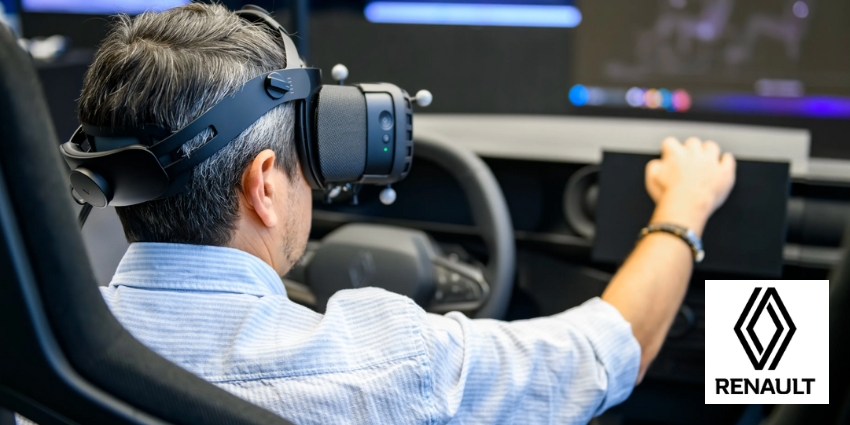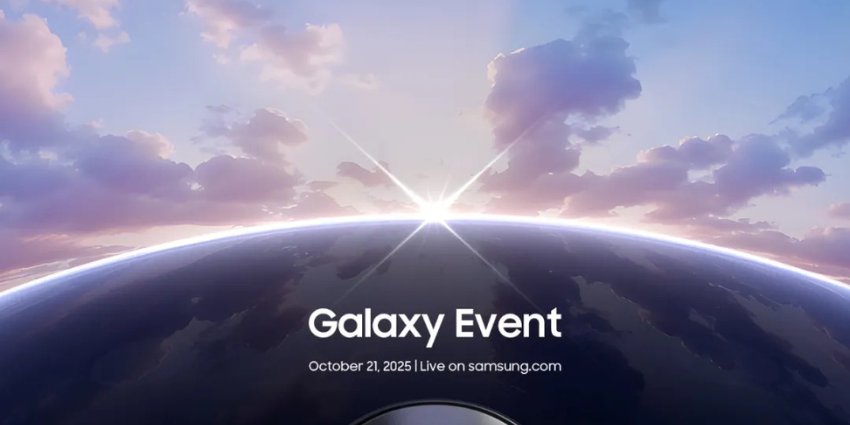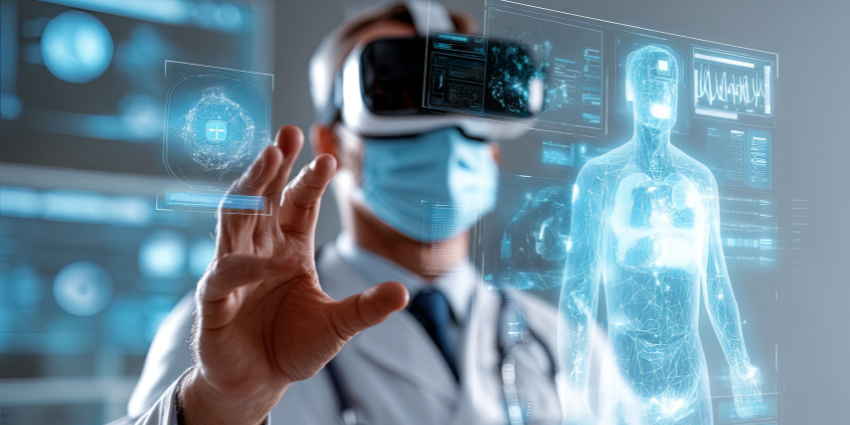This week, XR saw big leaps: XPANCEO secured $250M for its groundbreaking smart contact lenses, promising all-in-one XR, health monitoring, and night vision.
Nokia and WEART are advancing haptic feedback, enabling users to “feel” virtual objects and ShapesXR updated its design platform with intuitive, code-free spatial animation, making prototyping more dynamic.
XPANCEO Gains $250 Million
This week, AR smart contact lens innovator XPANCEO secured a $250 million Series A funding round, reaching a valuation of $1.35 billion, to help accelerate its development of an all-in-one smart contact lens with XR features such as real-time health monitoring, night vision, and zoom capabilities.
Roman Axelrod, Founder and Managing Partner at XPANCEO, added:
There’s broad consensus across Big Tech that AI-powered wearable XR is the future. Yet, major players have only recently begun building glasses and headsets, so our smart lens technology puts us at least five years ahead. Becoming a unicorn is a powerful signal that we’re on the right path. In just 24 months, we’ve developed 15 working prototypes, each unlocking a new layer of possibility. Our vision remains the same: to merge all your devices into a single, invisible interface – your eyes.
Opportunity Venture led the funding round, following its involvement in a previous $40 million seed round. Dr. Valentyn S. Volkov, Founder and Scientific Partner at XPANCEO, also added:
To build something this ambitious, we had to push the boundaries of science itself. Our team possesses exceptional expertise at the forefront of physics, including on novel materials, nanoparticles development, nano-optics, and more. Our unique approach to research, which leverages AI to optimize our R&D workflows and patent analysis, allowed us to accelerate the development of an unprecedented number of prototypes in a short time and contribute to 110 scientific publications in leading journals, collaborating closely with world-renowned experts.
Nokia, WEART to Revolutionise Virtual Interaction
At the IEEE World Haptics Conference, Nokia, the global telecommunications giant, recently showcased its research and development in thermal haptics for virtual environments, collaborating with the haptic feedback leader WEART.
This research focuses on developing haptic hardware to create a physical feedback platform based on heat and touch. It aims to advance the evolution of thermal haptics, spatial haptics, enhanced interactivity, and overall codec improvements.
By utilising WEART’s technology, Nokia is creating a haptic model that enables users to recognise virtual materials through touch alone, which is particularly useful for tasks like sorting visually identical objects.
During the conference, Nokia provided attendees with first-hand experiences to demonstrate its work toward the future of haptics. Visitors can wear an XR headset paired with WEART’s TouchDIVER Pro haptic gloves to experience thermal haptic cues in a virtual environment, interacting with virtual assets that simulate hot and cold objects.
Nokia emphasises that this initiative enhances the capabilities of virtual and augmented reality experiences and improves volumetric video streaming and communication. This effort builds toward “next-generation immersive interactions enhanced by haptic feedback.”
Additionally, Nokia highlighted that standardisation in haptics is “crucial” for ensuring interoperability among XR devices, allowing future immersive hardware to operate seamlessly as haptic technology becomes more widely adopted.
ShapesXR Gains Crucial Updates
In other news, ShapesXR, a design and prototyping platform for 3D and XR experiences, recently announced an update that allows design teams to include spatial animations in their platform projects.
This new feature introduces a frame-based animation system without writing code. Inga Petryaevskaya, CEO of ShapesXR, explained:
Animation brings real magic to ShapesXR. Every prototype becomes more immersive, expressive, and engaging. We’ve made the system so intuitive that anyone can start animating within minutes. Animation is in our DNA—we started from animation years ago, and it’s always been our dream to bring it into ShapesXR in a way that’s fast, intuitive, and accessible. Our goal was to enable rapid prototyping without losing the speed and creative freedom to explore new ideas.







